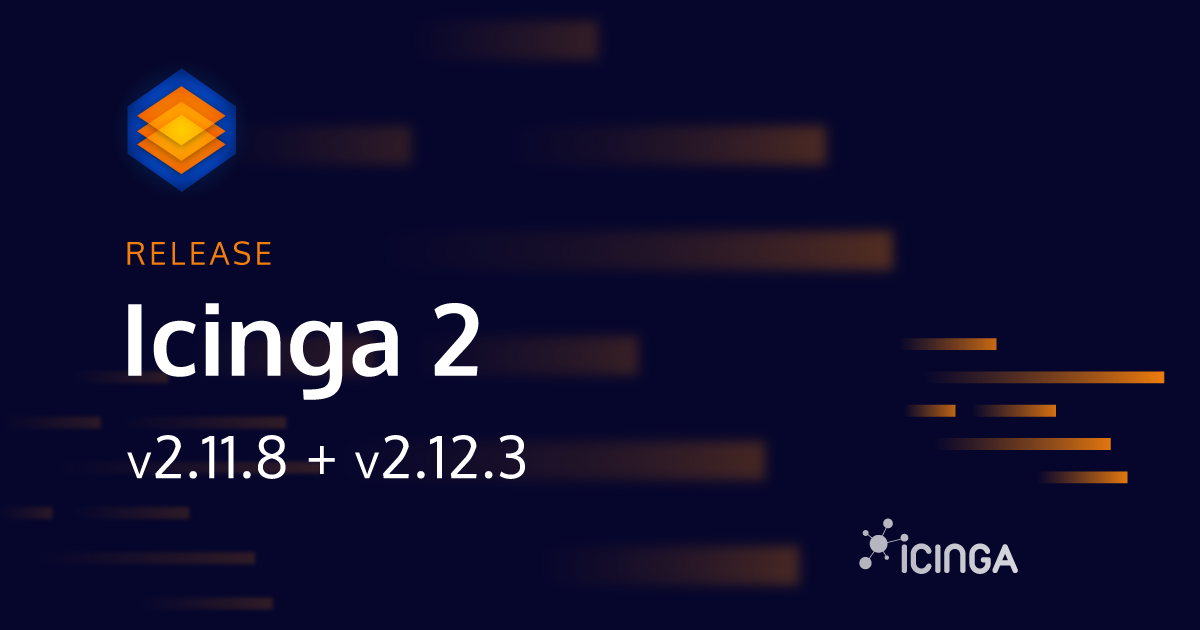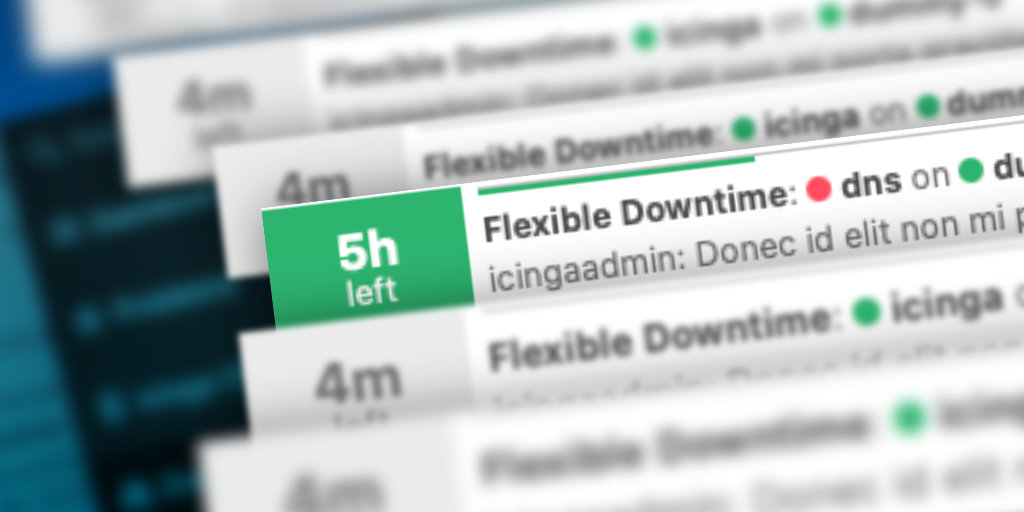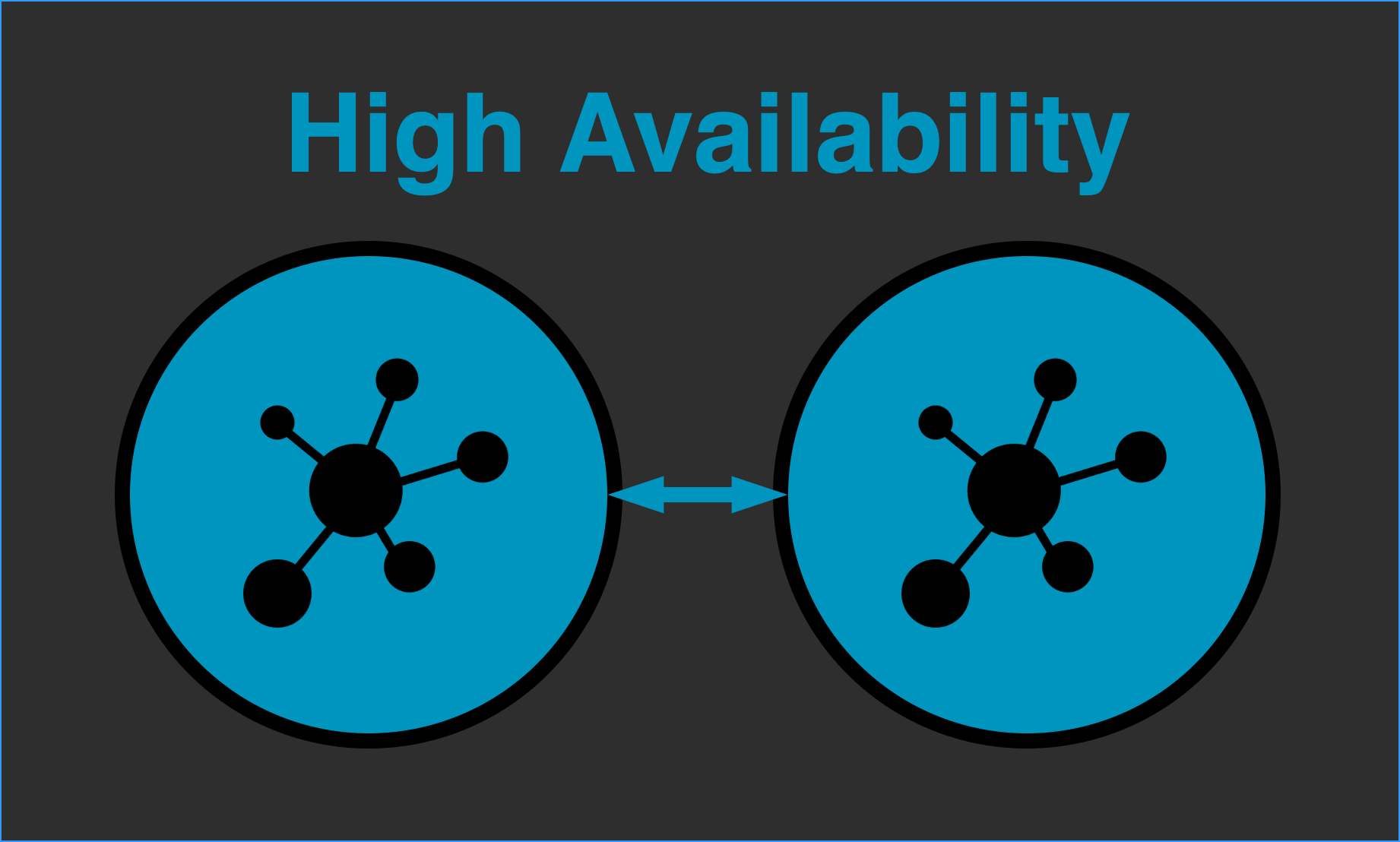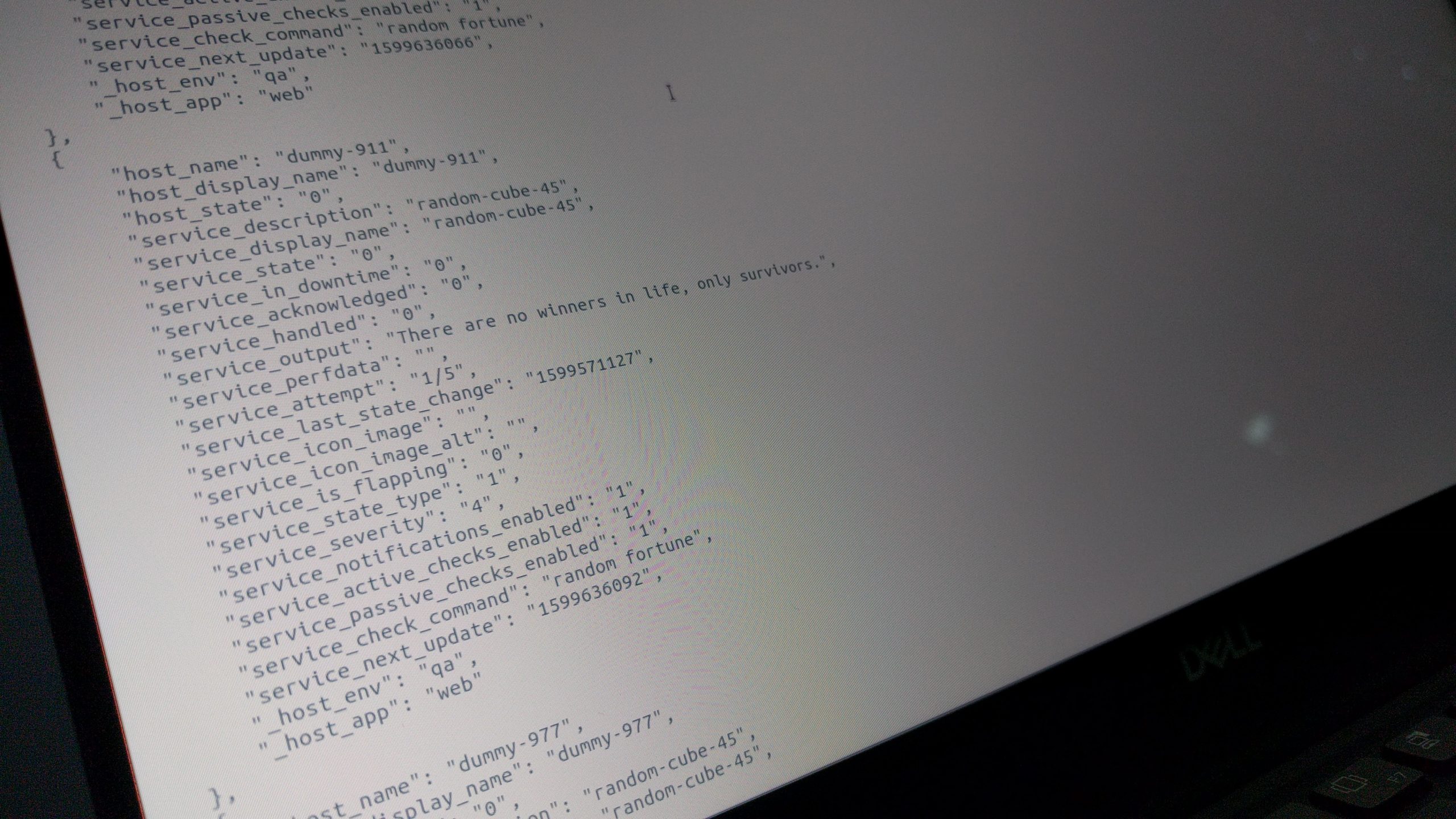Today we are releasing a new version of Icinga DB, version 1.3.0. This is a maintenance release, integrating the container setup directly into Icinga DB. Most importantly, first-class support for...
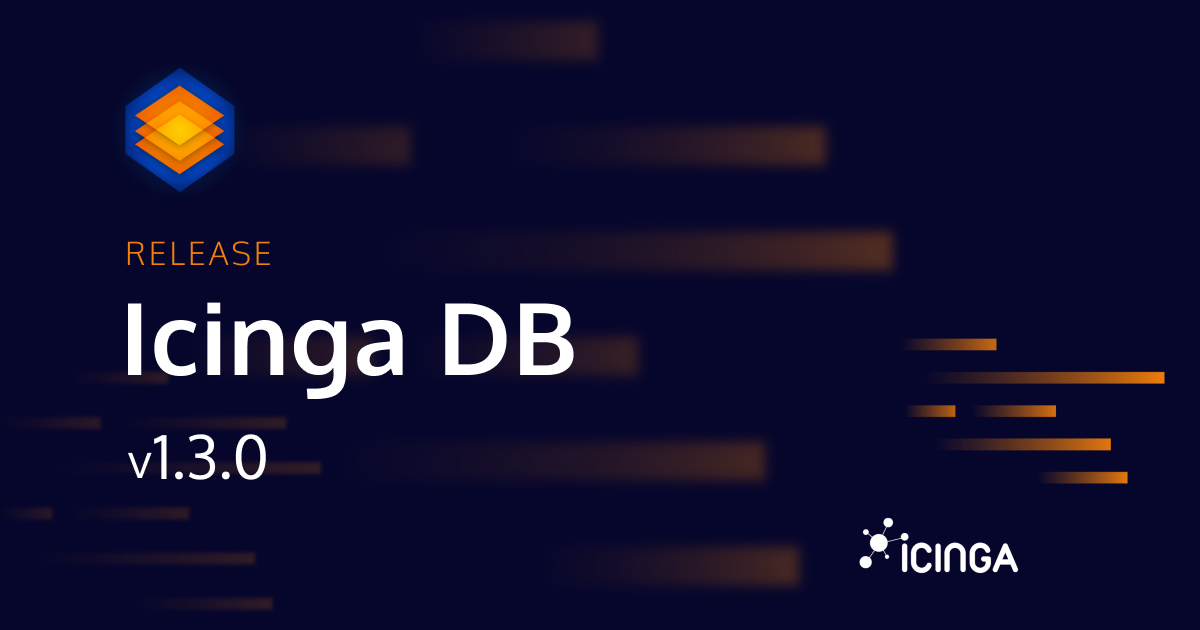
Releasing Icinga DB v1.3.0
Today we are releasing a new version of Icinga DB, version 1.3.0. This is a maintenance release, integrating the container setup directly into Icinga DB. Most importantly, first-class support for...

Icinga 2 Insights With Event Streams
There are many ways to interact with the data that Icinga 2 collects, processes, and produces. The most common is probably Icinga Web, which displays checks in all the colors of a traffic light. Icinga 2 also comes with several metrics or performance data writers. But...
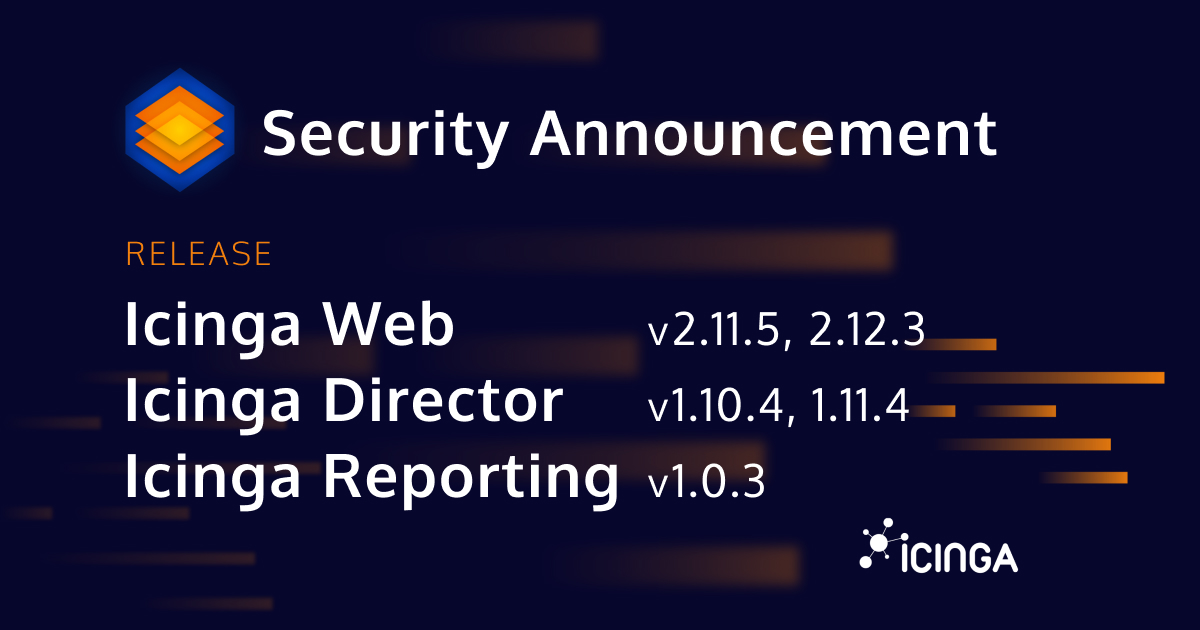
Releasing Icinga Web v2.11.5 and 2.12.3, Icinga Director 1.10.4 and 1.11.4, Icinga Reporting 1.0.3
Update (2025-03-26 16:45:00 UTC) We released a hotfix release for Icinga Web 2.11 and 2.12 afterwards. Please install 2.11.6 and 2.12.4, respectively. -- Today we release three updates, each for an integral component of Icinga, which all close a total of five security...
Releasing Icinga 2.11.8 + 2.12.3: Security and small improvements
Today we are releasing the 2.11.8 and 2.12.3 security & bugfix releases. Both versions contain the same changes. They resolve a security vulnerability with revoked certificates being renewed automatically ignoring the CRL, issues with high load on Windows...
How downtimes are displayed in Icinga DB Web
With the development of Icinga DB we not only rebuilt the core of how Icinga stores and reads monitoring data. With a complete rebuild of the monitoring module we took the chance and refined most aspects of the user interface as well. One aspect that got attention is...
Managing the Icinga Director with Ansible
This is a guest blogpost from Sebastian Gumprich from T-Systems Multimedia Solutions GmbH --- Our company is using Icinga for quite some time now to monitor our whole infrastructure and its customers infrastructure. We deploy many Icinga instances for different teams...
Upcoming PostgreSQL Support for Icinga Certificate Monitoring
Our goal is to support both MySQL and PostgreSQL as a backend wherever we need a database. Our latest addition in this area was PostgreSQL support for reporting, which will be released in the next few weeks. We don't have PostgreSQL support for Icinga Certificate...
Docker: Secure, but comfortable images.
While developing Docker images for Icinga 2, Icinga Web 2 and Icinga DB we stumbled over OpenShift which doesn’t allow images to run as root by default. One has to enable that explicitly. Also admins of K8s environments being more permissive by default may decide not...
Icinga for Windows: MSSQL Plugin Release v1.0.0
Today we are happy to announce that our MSSQL plugins for Icinga for Windows are enhancing the series of Icinga plugins and become released as version 1.0. With this first release we are sharing four plugins to check the current health of MSSQL itself but also...
How to set up High-Availability Masters
When getting started with Icinga 2, a single master instance is often sufficient. However, if your monitoring is business-critical, you’ll need to set up High-Availability Masters to ensure redundancy and stability. This post will guide you through the process of...
Exporting Data from Icinga Web 2
Today we will talk about exporting data (such as hosts and services) from Icinga Web 2 into various formats. Exporting From the UI You have probably already seen the drop-down in the upper left corner of a list? If you hover there with your mouse or focus it by...
Introducing the redesigned Check Statistics widget
Those of you, who’ve already tried out the Web Interface for Icinga DB might have noticed the redesigned layout of the check execution statistics section in a monitoring object’s detail view. For all the others: Learn about it in this post. On first hand we wanted to...

Subscribe to our Newsletter
A monthly digest of the latest Icinga news, releases, articles and community topics.


